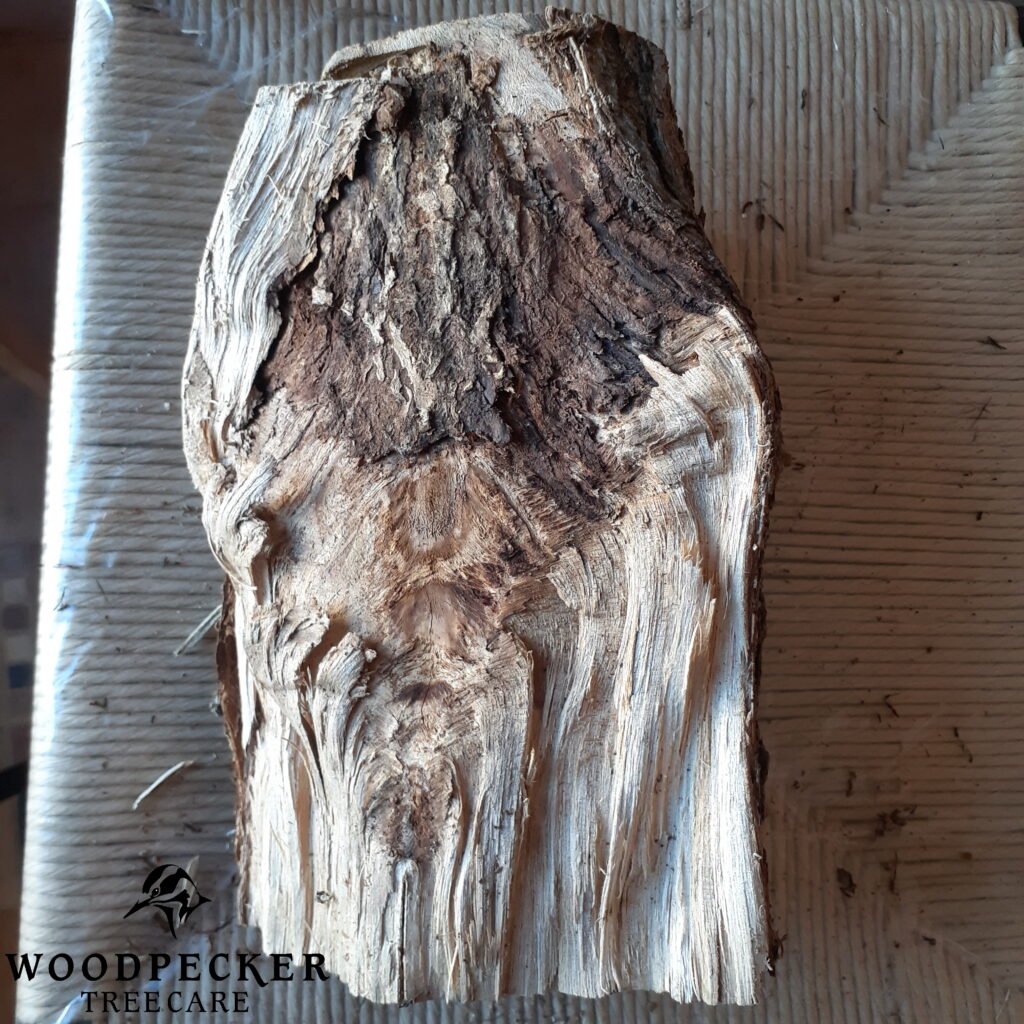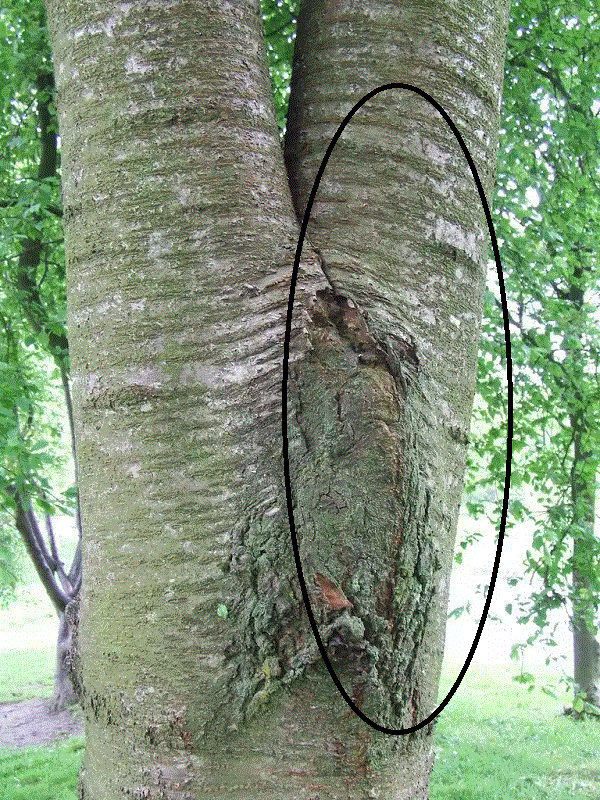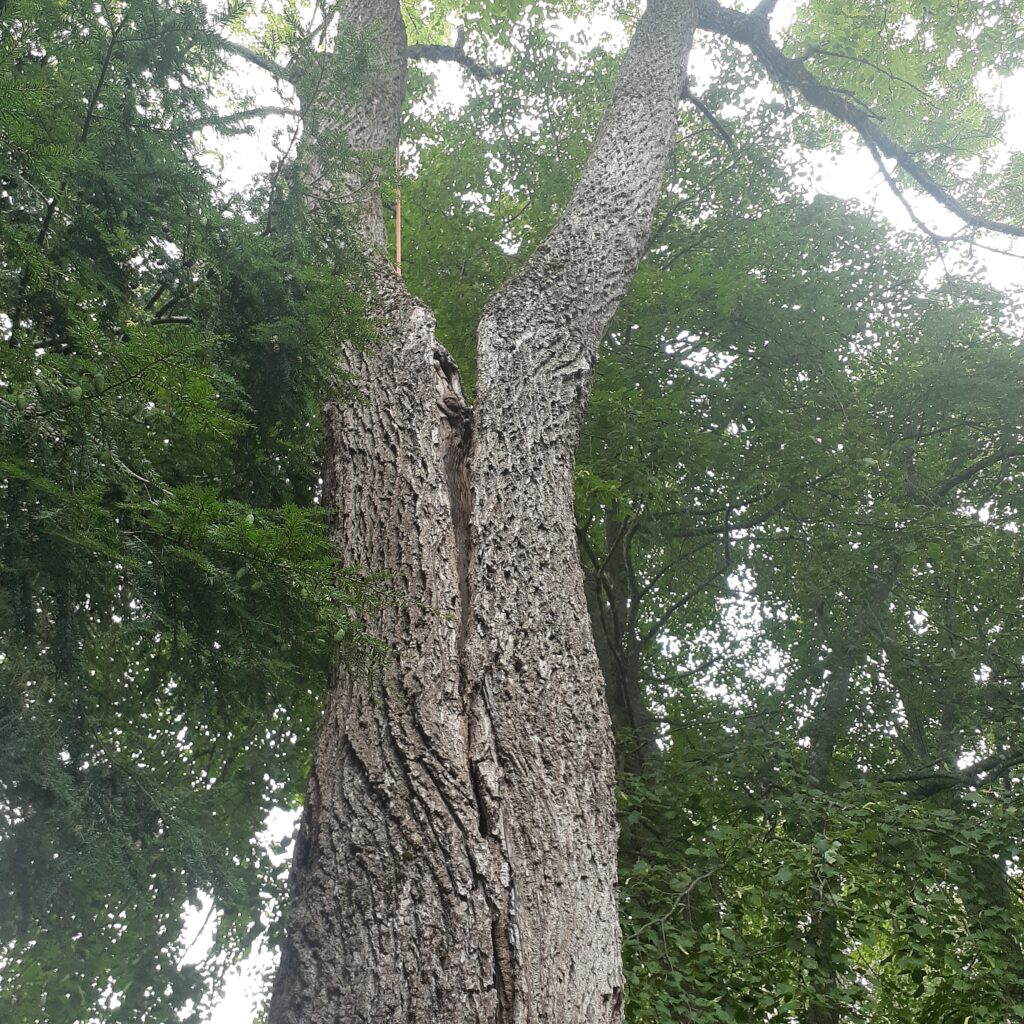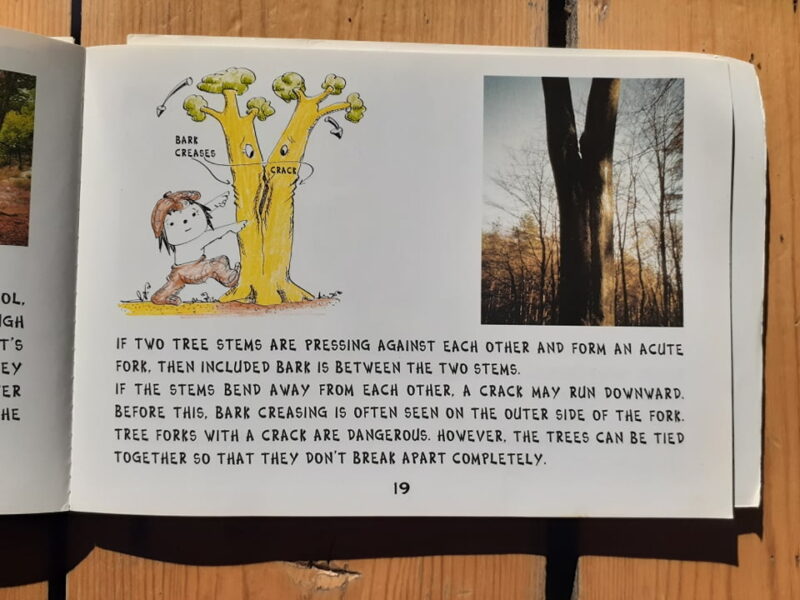Woodpecker HQ is thrilled to encounter an elm log in the woodshed, but not everyone is as enthusiastic about burning elm. Elms hold moisture for a long time, and need to dry out in the right conditions before being thrown in the stove. It’s also more difficult to split with an axe, since its fibers interlock and resist being pulled apart. Thankfully, the Woodpeckers have access to a hydraulic log splitter that makes short work of a stubborn elm.
This log was about to go onto the fire when Kevin noticed some giveaway signs of one of the most common problems we see in urban trees.

Codominant stems with included bark are the most common cause of urban tree failure. When two stems of equal or similar size are present like this, the bark can become included, meaning it grows inward rather than outward. This Woodshed Wonder is one half of a formerly codominant stem of an elm tree.

It’s important to prune trees while they are young, as each tiny stem is a blueprint for the mature tree. If pruning is skipped, large stems can battle for dominance and potentially cause structural problems.

This black walnut that we cabled and braced for a Sackville client is a perfect example of a codominant stem. We used the Cobra cabling system and metal braces to help this tree stay together.
Kevin is a big fan of this childrens’ book, “Stupsi Explains the Tree: A Hedgehog Teaches the Body Language of Trees,” written by Dr. Claus Mattheck of Germany. He read both of his children this book when they grew up, and it is an excellent resource for tree enthusiasts of all ages.

Not every tree with stems of similar size is a hazard, but if you aren’t sure you can always give us a call. We are preservation specialists who will not take a tree down unless it is absolutely necessary. Even if your tree has a codominant stem with structural concerns, we will discuss all options available to keep your tree standing.
Find any woodshed wonders in your stockpile this winter? Send a photo and we may dissect them for you, Shigo-style!